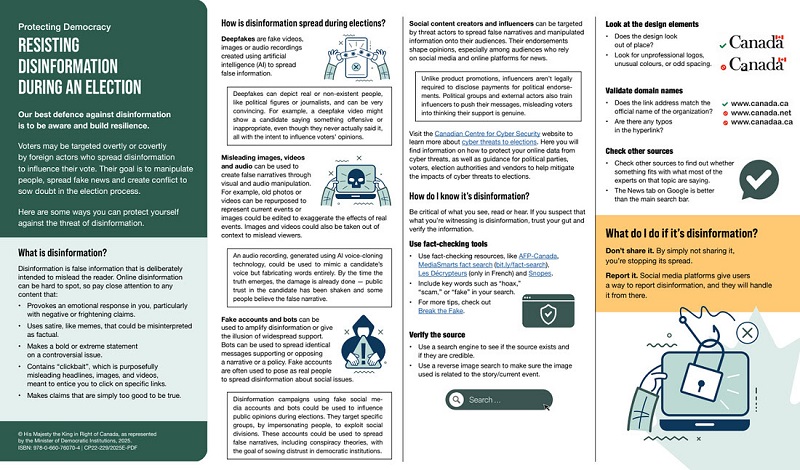International
Biden explains why he dropped out of presidential race
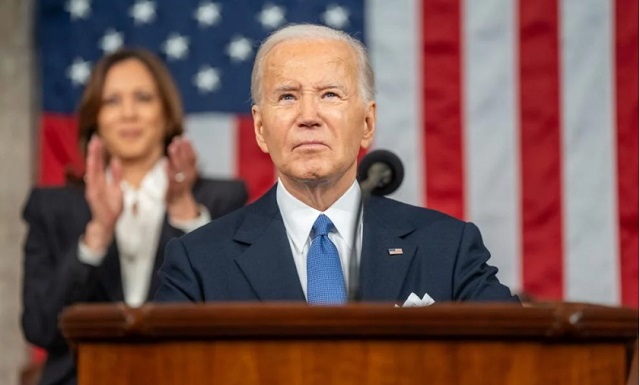
From The Center Square
By
President Joe Biden explained to reporters Tuesday in more detail his rationale for suddenly ending his reelection bid earlier this year.
Biden told reporters that his race against former President Donald Trump would have been close and that he “could have won.” Biden said he wasn’t “that far behind” but that he was worried that he would hurt Senate and House Democrats running for their seats.
“What have happened though, if the discussion had been, was I going to cost seats for Democrats, that would have been the whole subject matter for the remainder of the campaign,” Biden told reporters at Chicago O’Hare International Airport before boarding Air Force One. “You’d have to cover it, that would be the issue, and it would give him an advantage.”
A reporter asked Biden if he was angry with Former House Speaker Nancy Pelosi, who reportedly helped lead the pressure to push Biden out of the race. Several news outlets have reported that leading Democrats forced Biden out because of his poor polling.
“No, I haven’t spoken to Nancy at all,” Biden said. “I mean, look, I made — no — no one influenced my decision. No one knew it was coming. What I decided to do was — I didn’t want to — to the extent that the party thought they’d lose Senate seats or House seats, it — that would have been the topic you would have had to cover the entire remainder of the campaign, and it wasn’t worth it.”
Biden’s campaign implosion began after his disastrous performance at the presidential debate against Trump in June. Biden fumbled, faltered, trailed off and at times was incoherent at the debate, prompting Democrats in Congress, traditionally liberal media, and a range of political pundits to call for Biden to step aside.
Biden initially remained defiant but after a few weeks Biden announced on social media that he was stepping out of the race. He endorsed his Vice President Kamala Harris, who is expected to receive the nomination at the Democratic National Convention this week.
Biden spoke at that convention Monday night where he received a standing ovation, and Harris thanked him.
Biden’s comments Tuesday about his concern for losing House and Senate seats are a new, more revealing admission from the president. In a speech last month where Biden addressed the nation to explain his departure and endorse Harris again, he focused on touting his record in office and “passing the torch” to Harris to “save our Democracy.”
Biden’s remarks Tuesday show that the down-ballot fears played a much larger role. Polling before Biden’s withdrawal showed Trump leading Biden nationally by about 3 points but leading with much larger margins in several key swing states. In fact, Trump was dominating Biden in the swing states before Biden’s withdrawal.
Former President Donald Trump has publicly attacked Democrats for switching out Harris for Biden, who did win the delegates in primary states only to have those delegates endorse Harris.
“The Democrats staged the first ever ‘Coup’ in America,” Trump said in a statement Monday. “Crooked Joe Biden was told, ‘Sorry Joe, you’re losing to Trump, BIG, and you can’t beat him – You’re Fired.’ So now, for the first time in American history, I’ll have to beat TWO Candidates, the second being a Radical Left Marxist, Comrade Kamala Harris. It’s not fair, perhaps even another form of Election Interference, but the good news is that she should be easier than to beat than Crooked Joe in that the USA will never allow itself to become a Communist Country. THE DEMOCRATS ARE, ‘A THREAT TO DEMOCRACY?’”
When asked about those coup comments, Biden made a quip questioning Trump’s “stability” and later added that no one “took me out.”
Casey Harper
D.C. Bureau Reporter
Autism
RFK Jr. Completely Shatters the Media’s Favorite Lie About Autism
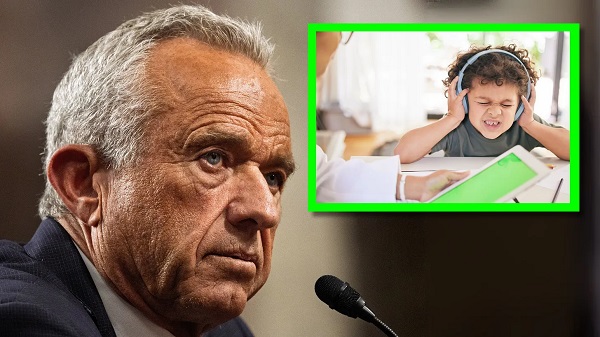
 The Vigilant Fox
The Vigilant Fox
They say autism is rising because of “better diagnosis”—but RFK Jr. just blew that narrative wide open. He brought the hard data and dropped one undeniable truth the denialists can’t explain.
HHS Secretary Robert Kennedy Jr. appeared on Hannity Thursday evening and unloaded on the predominant autism narrative. It started with a bombshell reveal from Kennedy’s own childhood.
Hannity asked: “What was the number when you were a kid—and what do you think is going on?”
Kennedy replied: “There’s really good data on that.”
He pointed to one of the largest studies ever conducted—900,000 children in Wisconsin, published in a top-tier medical journal.
“It looked at 900,000 kids. It was published in a high-gravitas journal, peer-reviewed study, and they found the rate to be 0.7 out of 10,000.”
That’s less than 1 in 10,000. Today? It’s around 1 in 31.
Let that sink in.
Join 110K+ Substack readers and 1.6 million 𝕏 users who follow the work of Vigilant Fox.
Subscribe for top-tier news aggregation and exclusive stories you won’t find anywhere else.
That’s when Kennedy sounded the alarm on what’s happening now—and why it’s so catastrophic. He said the rise isn’t just in frequency—it’s in severity.
“Two years ago, it was 1 in 36. The CDC data we released this week shows 1 in 31,” Kennedy said.
“The worst state is California,” Kennedy continued, “which actually has the best collection methodologies. So they actually, probably reflect what we’re seeing nationwide.”
“In California, it’s 1 in every 20 kids, and 1 in every 12.5 boys,” he explained.
Even worse, he said the numbers are likely underreported in minority communities. And for many kids, the symptoms are devastating:
“About 25% of the population of those kids with autism, about 25% of them are nonverbal, nontoilet trained,” Kennedy explained.
“They have all of these stereotypical behaviors, the head banging, biting, toe walking, stimming, and that population is growing higher and higher.”
“It’s becoming a larger percentage, so we’re seeing many more cases that are now linked to severe intellectual disability.”
He says it’s a glaring red warning sign—and it’s past time to start acting on it.
And this was the moment that Kennedy took a flamethrower to the media narrative about autism. He shattered the core excuse we’ve all been fed—that this epidemic isn’t real, that it’s just a change in how we count it.
He’s not buying it.
“The media has bought into this industry canard, this mythology, that we’re just seeing more autism because we’re noticing it more. We’re better at recognizing it or there’s been changing diagnostic criteria.”
But the scientific literature, Kennedy said, says otherwise.
“There is study after study in the scientific literature going back, and they decided that the literature going back says decades that says that’s not true.”
He then cited a major investigation by California’s own lawmakers.
“In fact, the California legislature… asked the Mind Institute at UC Davis to look exactly at that topic. They [asked], is it real or are we just noticing it more? The Mind Institute came back and said, ‘Absolutely this is a real epidemic. This is something we’ve never seen before.’”
And he made it painfully clear:
“Anybody with common sense, Sean, would notice that, because the autism—this epidemic is only happening in our children. It’s not happening in people who are our age. And if it was better recognition, you’d see it in 70-year-old men.”
But we don’t.
And after laying out the data, dismantling the media narrative, and exposing the severity of the crisis, Kennedy concluded with a clarion call to get to the bottom of this epidemic.
That’s why he says it’s time to dig deeper—leave no stone unturned, and we may have answers sooner than you think.
“President Trump asked me to find out what’s causing it,” he told Hannity.
“And I am approaching that agnostically. We are looking at everything, we are going to do, we’re going to be very transparent in how we design the studies.”
To get real answers, he’s farming the research out to top institutions across the country—with full transparency from day one.
“We’re going to farm the studies out to 15 premier research groups from all over the country. And we’re going to be transparent about our protocols, about the data sets, and then every study will have to be replicated.”
The list of possible factors is long—and nothing is being ruled out, Kennedy explained.
“We’re going to look at mold. We’re going to look at the age of parents. We’re going to look at food and food additives. We’re going to look at pesticides and toxic exposures. We’re going to look at medicines. We’re going to look at vaccines. We’re going to look at everything.”
When asked how long it would take, Kennedy didn’t miss a beat.
“I think we’ll have some preliminary answers in six months. It will take us probably a year from then before we can have definitive answers because a lot of the studies will not go out until the end of the summer.”
For the first time in decades, someone is asking the hard questions—and demanding real answers.
This time, nothing is off-limits.
Thanks for reading. If you value the work being published here, upgrading your subscription is the most powerful way to support it. The more this Substack earns, the more I can do to improve quality and create the best reader experience possible.
Thank you for your support.
Energy
‘War On Coal Is Finally Over’: Energy Experts Say Trump Admin’s Deregulation Agenda Could Fuel Coal’s ‘Revival’
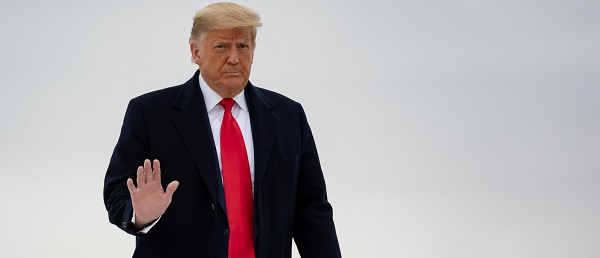

From the Daily Caller News Foundation
By Audrey Streb
Within the first months of his second administration, President Donald Trump has prioritized “unleashing” American energy and has already axed several of what he considers to be burdensome regulations on the coal industry, promising it’s “reinvigoration.”
Trump signed an executive order on April 8 to revive the coal industry, and shortly after moved to exempt several coal plants from Biden-era regulations. Though it has become a primary target of many climate activists, coal has been historically regarded as readily available and affordable, and several energy policy experts who spoke with Daily Caller News Foundation believe Trump has the cards necessary to strengthen the industry.
“When utility bills are skyrocketing or blackouts are happening in winter, people are going to want reliable power back,” Amy Cooke, co-founder and president of Always on Energy Research and the director of the Energy and Environmental Policy Center told the DCNF. “The beauty of coal is that it allows for affordable, reliable power, which is absolutely crucial to economic prosperity, and in particular, innovation.”
“I think the number one, most significant threat to humanity is no power,” Cooke said, adding that coal is a vital contributor to the nation’s “baseload power.”
Following his executive order, Trump in early April granted a two-year exemption for nearly 70 coal plants from a Biden-era rule on air pollution that required them to reduce certain air pollutants. The Environmental Protection Agency (EPA) said that the move would “bolster coal-fired electricity generation, ensuring that our nation’s grid is reliable, that electricity is affordable for the American people, and that EPA is helping to promote our nation’s energy security.”
Shortly after, skepticism swirled surrounding whether or not the coal industry would be able to experience a revival, and whether it would be economically savvy to pursue one.
Energy generated from burning coal only powers roughly 16% of the U.S., though 40 states are dependent on coal, according to data from America’s Power. Energy generation through coal reached a record low in 2023, a Rhodium Group study reported. In 2021, however, coal was the primary source of energy for 15 states, according to the U.S. Energy Information Administration.
“We can lead the world in innovation,” Cook told the DCNF, referencing developments in natural gas and nuclear power as beneficial. “But you have to have coal. It has to be part of the mix.”
“It’s insane that we would shut down any base load power right now, when the demand for power is so high,” Cooke added. She further referenced the North American Electric Reliability Corporation’s 2024 report and research from Always on Energy Research that have projected rolling blackouts to begin across the U.S. by 2028.
As American energy demand continues to climb, the odds of impending blackouts would increase if the supply fails to grow at the same rate. The push toward renewable energy sources, in addition to stringent environmental regulations approved under former President Joe Biden, may have contributed to the slower growth of energy supply currently being experienced in the U.S.
Immediately after returning to the White House, Trump declared a national energy emergency, stating that “the integrity and expansion of our Nation’s energy infrastructure” is “an immediate and pressing priority for the protection of the United States’ national and economic security.”
“We looked at it and predict that there will be periods of blackouts of 24 hours or more,” Cook told the DCNF.
She further noted that “the cheapest power is the power you’ve already paid for,” arguing for the continuation of existing coal plants and the reopening of ones that have been closed.
“The only people who think coal is bad are those who view it through the lens of carbon emissions only, and that is no way to do energy policy,” Cooke said, arguing that it is necessary to adopt a “holistic” approach to energy generation, given the nation’s projected energy crisis.
“The American people need more energy, and the Department of Energy is helping to meet this demand by unleashing supply of affordable, reliable, secure energy sources – including coal,” Department of Energy Secretary Chris Wright said in an April 9 statement. “Coal is essential for generating 24/7 electricity,” he added, “but misguided policies from previous administrations have stifled this critical American industry. With President Trump’s leadership, we are cutting the red tape and bringing back common sense.”
The president has also said that he envisions greater job opportunities for coal miners with the industry’s expansion, stating during an April 8 press conference that the workers are “really well-deserving and great American patriots.”
“For years, people would just bemoan this industry and decimate the industry for absolutely no reason,” Trump added.
“Miners can wake up today for the first time in a decade and their spouses and families will realize they have a job tomorrow,” reporter Bob Aaron said in a video shared on X. They can “hear a president of the country announce that the war on coal is over.”
“I really anticipate a revival in the coal industry in the United States under Trump,” David Blackmon, an energy and policy writer who spent 40 years in the oil and gas business told the DCNF. He pointed to the Trump administration loosening restrictions on coal, adding that the Biden administration made it “near impossible” to build new coal plants due to aggressive climate rules.
Under Biden’s signature climate bill, the Inflation Reduction Act, the U.S. prioritized renewable energy generation and subsidization, resulting in a hefty price tag for taxpayers who had to foot the bill for several environmental initiatives, including hundreds of millions of dollars for solar panel construction in some of the nation’s least-sunny locations.
“The cheapest, the most affordable thing to do is to keep our current infrastructure online,” André Béliveau, Senior Manager of Energy Policy at the Commonwealth Foundation, told the DCNF. “Coal remains one of, if not, the most affordable energy source we have.”
“You’re forcing retirement of full-time energy sources and trying to replace them with part-time energy sources, and that’s not going to work,” Béliveau continued, referencing renewable energy avenues such as wind and solar. “We can’t run a full-time economy on part-time energy.”
-
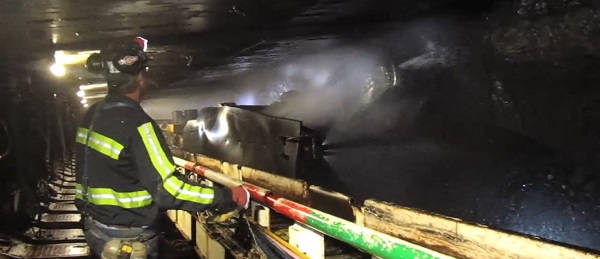
 Daily Caller2 days ago
Daily Caller2 days agoTrump Executive Orders ensure ‘Beautiful Clean’ Affordable Coal will continue to bolster US energy grid
-

 2025 Federal Election2 days ago
2025 Federal Election2 days agoBREAKING from THE BUREAU: Pro-Beijing Group That Pushed Erin O’Toole’s Exit Warns Chinese Canadians to “Vote Carefully”
-

 Business2 days ago
Business2 days agoChina, Mexico, Canada Flagged in $1.4 Billion Fentanyl Trade by U.S. Financial Watchdog
-

 COVID-191 day ago
COVID-191 day agoTamara Lich and Chris Barber trial update: The Longest Mischief Trial of All Time continues..
-
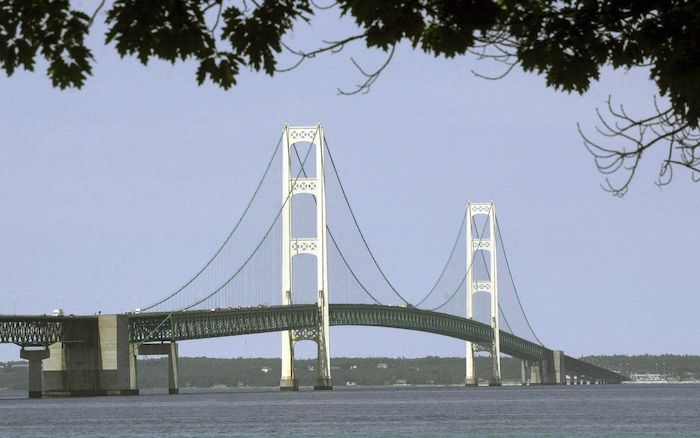
 Energy1 day ago
Energy1 day agoStraits of Mackinac Tunnel for Line 5 Pipeline to get “accelerated review”: US Army Corps of Engineers
-

 2025 Federal Election2 days ago
2025 Federal Election2 days agoAllegations of ethical misconduct by the Prime Minister and Government of Canada during the current federal election campaign
-
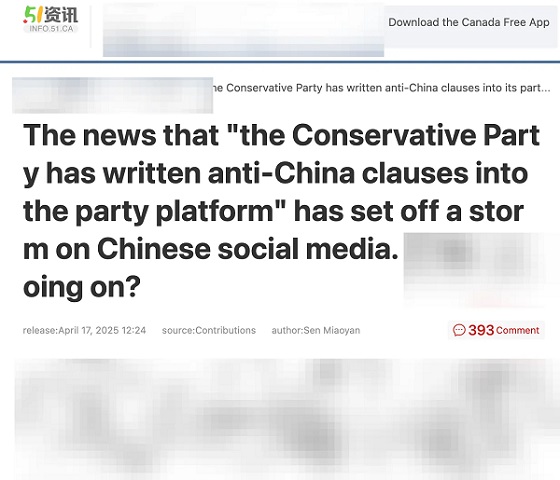
 2025 Federal Election15 hours ago
2025 Federal Election15 hours agoPRC-Linked Disinformation Claims Conservatives Threaten Chinese Diaspora Interests, Take Aim at PM Carney’s Debate Remark
-
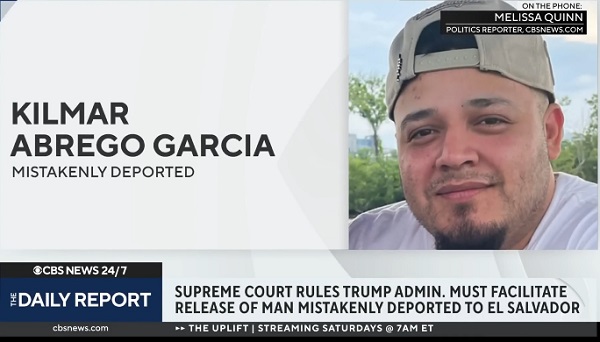
 Daily Caller2 days ago
Daily Caller2 days agoDOJ Releases Dossier Of Deported Maryland Man’s Alleged MS-13 Gang Ties










